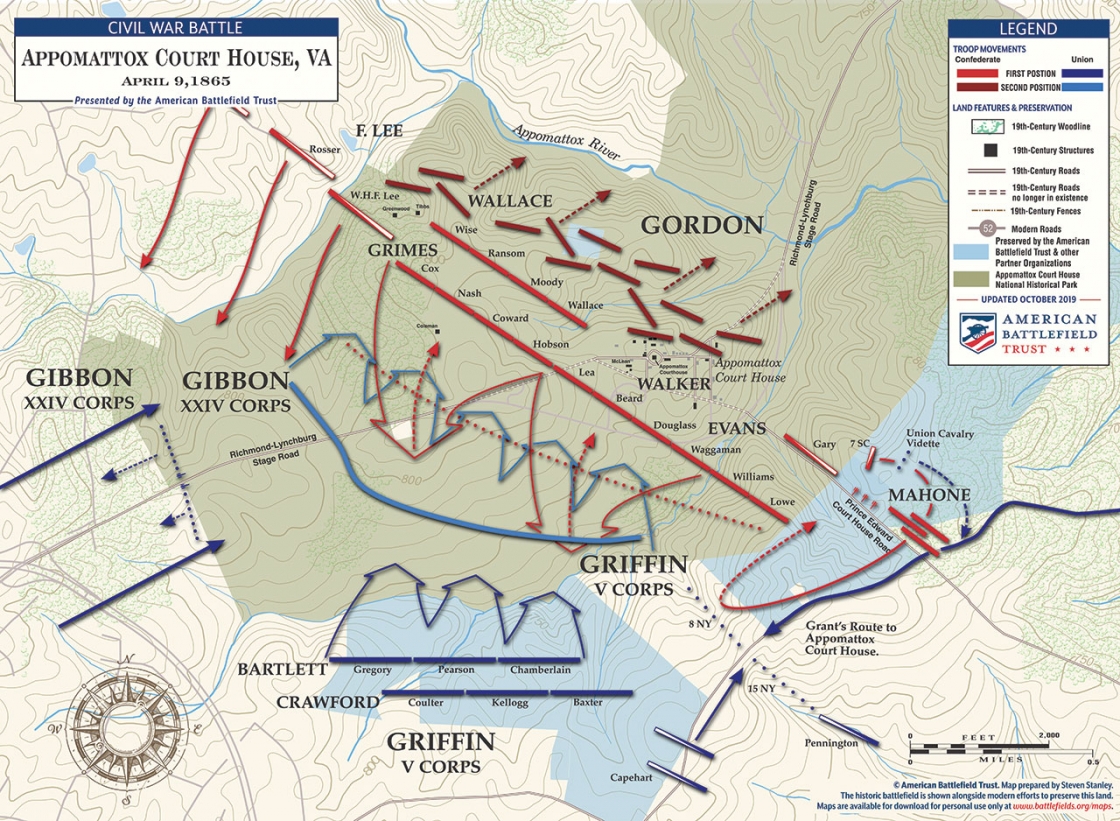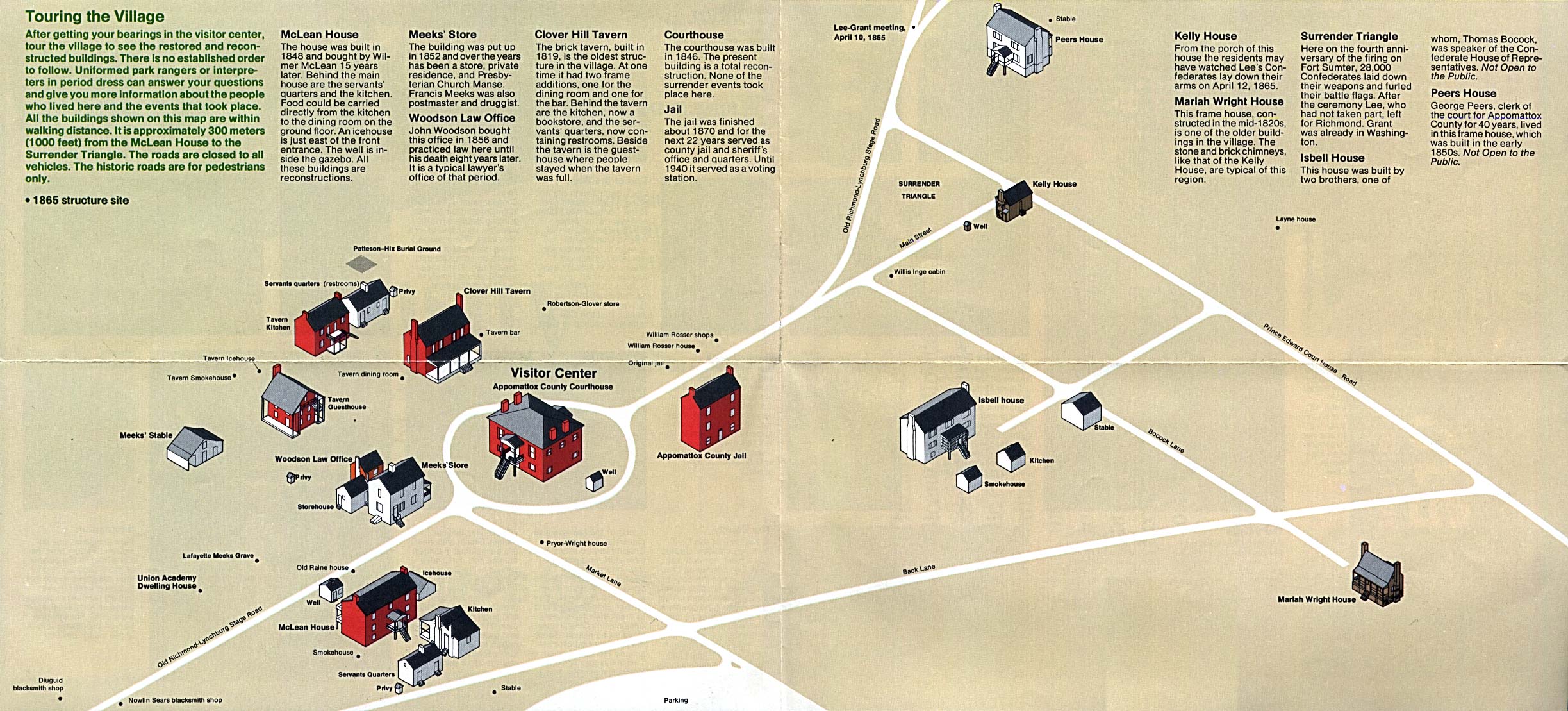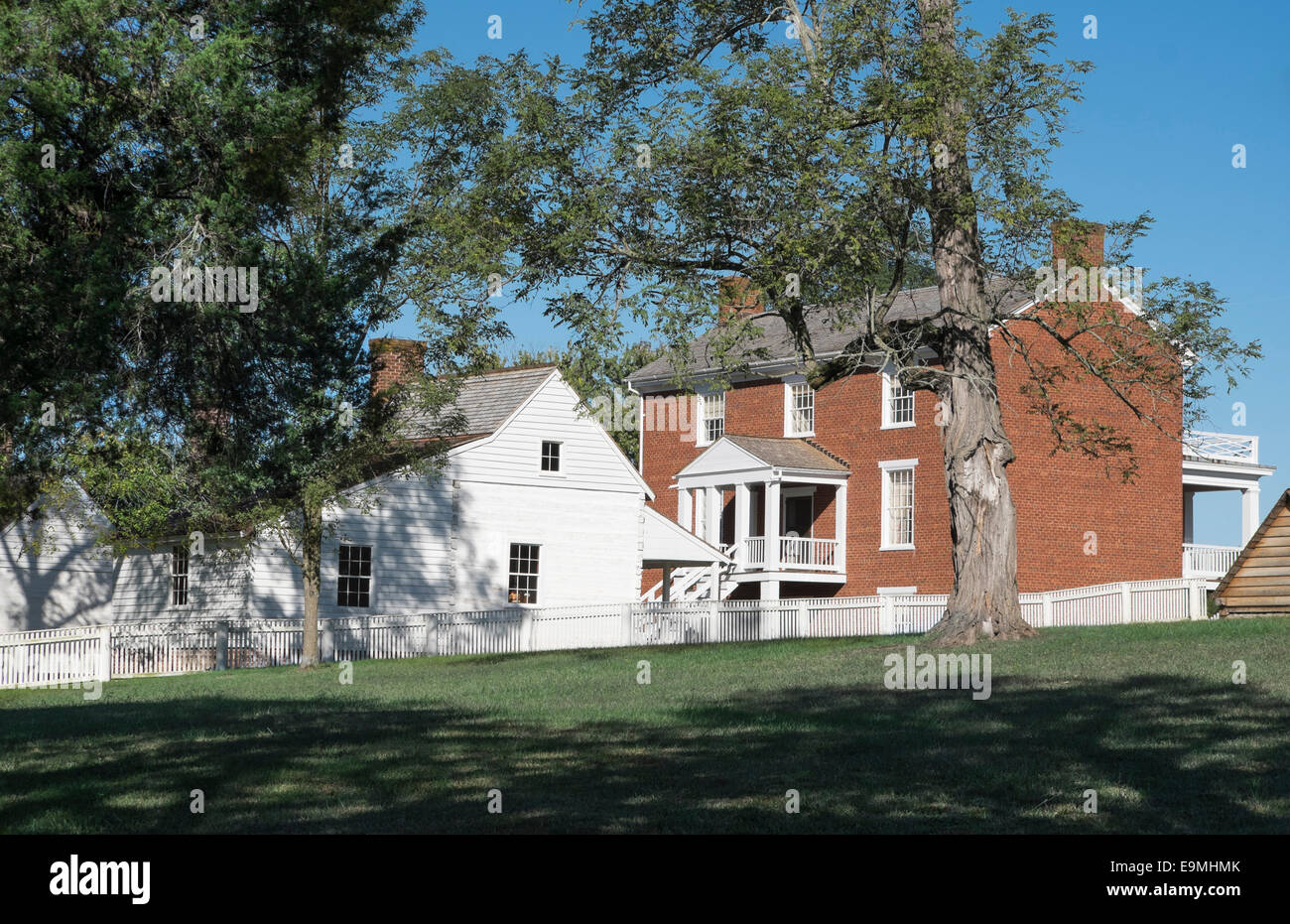Table Of Content

The village itself began as the community of Clover Hill, which was made the county seat of Appomattox County in the 1840s. The village of Appomattox Court House entered a stage of decline after it was bypassed by a railroad in 1854. In 1930, the United States War Department was authorized to erect a monument at the site, and in 1933 the War Department's holdings there was transferred to the National Park Service.

Edit My Account
Grant drafted the following generous terms of surrender, which avoided the harsh punishment and humiliation of Lee’s men. As you plan your visit, check our Operating Hours and Seasons, and consider taking in a Ranger-led talk, living history program, or walk on one of our many hiking trails. The soldiers of the Army of Northern Virginia were issued parole passes for safe passage home, free food and free transportation.
External links
Grant was flattered that Lee remembered him from that time, as he was much younger than Lee and more junior in rank. Many California counties, including Los Angeles County, have more than one courthouse. If you do not know which courthouse handles cases like yours, use the Filing Court Locator on the Los Angeles Superior Courts website and search by city or zip code. For the address, hours, parking information and directions for each courthouse in Los Angeles County, click here. Many within the Union considered Confederates traitors who were personally responsible for this tremendous loss of lives and property.
Confederate
The Appomattox Court House National Historic Park was created in 1940, and encompasses about 1,700 acres, including some of the battlefield land, the Court House, Lee’s headquarters, and a reconstructed McLean House (still missing much of its original furniture, which is scattered across the country). The American Battlefield Trust has preserved additional acreage which includes ground used during Griffin’s counterattack and land where Bvt. Maj. Gen. George Armstrong Custer’s cavalry division checked an advance down the LeGrand road by members of Brig. Gen. Martin Gary’s Confederate cavalry brigade. After Lee left the McLean House on April 9, some of the Union officers present promptly bought much of the furniture in McLean’s parlor.
HISTORY Vault: Black Patriots: Heroes of the Civil War
Grant anticipated Lee’s attempts to escape, however, and ordered two corps (XXIV and V) under the commands of Maj. Gen. John Gibbon and Bvt. Maj. Gen. Charles Griffin to march all night to reinforce the Union cavalry and cut off Lee’s escape. The surrender of the Army of Northern Virginia – the most celebrated Confederate army – followed a defeat in the final battle of the war in Virginia. The Battle of Appomattox Court House was the climax of a campaign that began eleven days earlier at the Battle of Lewis’ Farm.
At the opening of the Appomattox Campaign, Grant’s two armies numbered about 125,000 and Lee’s Army of Northern Virginia less than half that number. This quiet village and surrounding landscapes once composed an average Virginia stage road town with a county courthouse at its center. Its name is now immortalized for the tentative peace brought to the nation from Robert E. Lee's surrender of the Army of Northern Virginia to Ulysses S. Grant's Federal armies. The Appomattox Court House National Historical Park is the preserved 19th-century village named Appomattox Court House in Appomattox County, Virginia. The village was named for the presence nearby of what is now preserved as the Old Appomattox Court House. The village is the site of the Battle of Appomattox Court House, and contains the McLean House, where the surrender of the Army of Northern Virginia under Robert E. Lee to Union commander Ulysses S. Grant took place on April 9, 1865, an event widely symbolic of the end of the American Civil War.

The Battles of Appomattox Station and Court House
However, Gordon saw thousands of Union troops quickly approaching and sent word to Lee that his position was hopeless unless the infantry supported them. Lee’s infantry, however, was engaged with Grant’s Army of the James, which had approached the Confederates from the west under cover of night. Faced with no route of escape to Lynchburg, Lee agreed to negotiate terms of surrender. General Lee's final campaign began on March 25, 1865, with a Confederate attack on Fort Stedman, near Petersburg. General Grant’s forces counterattacked a week later on April 1 at Five Forks, forcing Lee to abandon Richmond and Petersburg the following day.
Meeting and Negotiation
The signing of the surrender documents occurred in the parlor of the house owned by Wilmer McLean on the afternoon of April 9. Over the decades, as if by some force of nature or history, the trophies of war removed form McLean’s home reunited at the Smithsonian. Capehart had given the Grant chair to one of his officers, General Wilmon Blackmar, who bequeathed it to the Institution in 1906. Whitaker would donate Lee’s chair to a Grand Army of the Republic charity event, where it was purchased by Captain Patrick O’Farrell and later donated to the Smithsonian by his widow in 1915. In 1936, Elizabeth Custer, whose late husband is better remembered for his last stand at the Battle of Little Big Horn than his role in the Civil War, gave the side table and her portion of the surrender towel.
Appomattox: The Surrender
The site was greatly enlarged in 1935, and a restoration of the McLean House was planned but was delayed by World War II. Several restored buildings (including the McLean House and the courthouse), as well as a number of original 19th-century structures are situated at the site. At the surrender ceremonies, about 28,000 Confederate soldiers passed by and stacked their arms.[28] General Longstreet's account was 28,356 officers and men were “surrendered and paroled”.[29] The Appomattox Roster lists approximately 26,300 men who surrendered. This reference does not include the 7,700 who were captured at Sailor's Creek three days earlier, who were treated as prisoners of war. Grant, aware that Lee's army was out of options, had written to Lee on April 7, requesting the Confederate general's surrender. But Lee still hopes to access more supplies further west at Lynchburg and does not capitulate.
Appomattox Court House National Historical Park to host Veterans Day activities - Times Virginian
Appomattox Court House National Historical Park to host Veterans Day activities.
Posted: Thu, 09 Nov 2023 08:00:00 GMT [source]
The war would not be officially declared won for the Union until August 20, 1866. As he was a man of much dignity, with an impassable face, it was impossible to say whether he felt inwardly glad that the end had finally come, or felt sad over the result, and was too manly to show it. Whatever his feelings, they were entirely concealed from my observation; but my own feelings, which had been quite jubilant on the receipt of his letter, were sad and depressed.
These documents, combined with stories by Confederate general John B. Gordon and Union general Joshua Chamberlain of generous Union tributes at the formal surrender on April 12, formed a narrative of reconciliation that remained influential into the twenty-first century. Generally left out of that narrative, however, have been African Americans, who, after emancipation, struggled against white supremacy in the South. The Union army, led by General Ulysses S. Grant, had relentlessly pursued the Confederate troops—this time, there would be no possible escape.
No comments:
Post a Comment